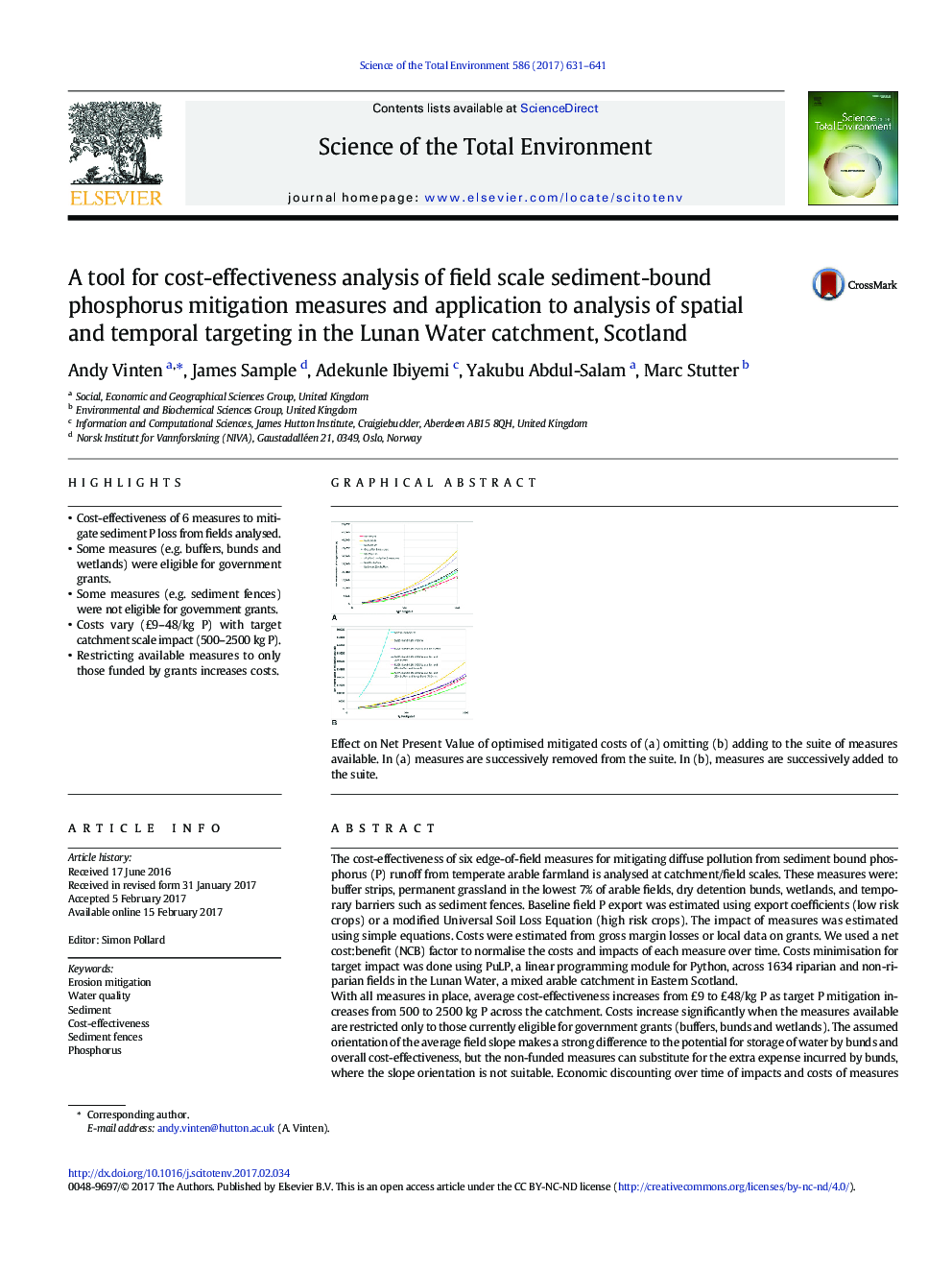| کد مقاله | کد نشریه | سال انتشار | مقاله انگلیسی | نسخه تمام متن |
|---|---|---|---|---|
| 5751159 | 1619707 | 2017 | 11 صفحه PDF | دانلود رایگان |

- Cost-effectiveness of 6 measures to mitigate sediment P loss from fields analysed.
- Some measures (e.g. buffers, bunds and wetlands) were eligible for government grants.
- Some measures (e.g. sediment fences) were not eligible for government grants.
- Costs vary (£9-48/kg P) with target catchment scale impact (500-2500 kg P).
- Restricting available measures to only those funded by grants increases costs.
The cost-effectiveness of six edge-of-field measures for mitigating diffuse pollution from sediment bound phosphorus (P) runoff from temperate arable farmland is analysed at catchment/field scales. These measures were: buffer strips, permanent grassland in the lowest 7% of arable fields, dry detention bunds, wetlands, and temporary barriers such as sediment fences. Baseline field P export was estimated using export coefficients (low risk crops) or a modified Universal Soil Loss Equation (high risk crops). The impact of measures was estimated using simple equations. Costs were estimated from gross margin losses or local data on grants. We used a net cost:benefit (NCB) factor to normalise the costs and impacts of each measure over time. Costs minimisation for target impact was done using PuLP, a linear programming module for Python, across 1634 riparian and non-riparian fields in the Lunan Water, a mixed arable catchment in Eastern Scotland.With all measures in place, average cost-effectiveness increases from £9 to £48/kg P as target P mitigation increases from 500 to 2500 kg P across the catchment. Costs increase significantly when the measures available are restricted only to those currently eligible for government grants (buffers, bunds and wetlands). The assumed orientation of the average field slope makes a strong difference to the potential for storage of water by bunds and overall cost-effectiveness, but the non-funded measures can substitute for the extra expense incurred by bunds, where the slope orientation is not suitable. Economic discounting over time of impacts and costs of measures favours those measures, such as sediment fences, which are strongly targeted both spatially and temporally. This tool could be a useful guide for dialogue with land users about the potential fields to target for mitigation to achieve catchment targets.
Effect on Net Present Value of optimised mitigated costs of (a) omitting (b) adding to the suite of measures available. In (a) measures are successively removed from the suite. In (b), measures are successively added to the suite.58
Journal: Science of The Total Environment - Volume 586, 15 May 2017, Pages 631-641